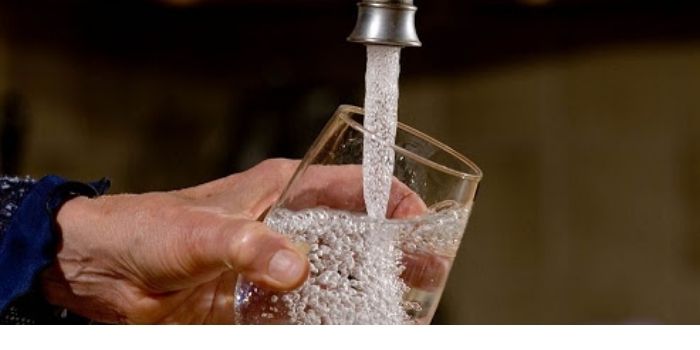What are harmful impurities found in drinking water?

Water being a universal solvent, dissolves most things it comes in contact with. Contamination of water is a serious threat to the lives of our country. Contaminants could be biological, chemical, physical, or radiological in their nature.
Physical contaminants change the physical properties of water including the appearance of water. Some of the instances of physical contaminants can be organic material found in streams, lakes or rivers from soil erosion.
Chemical contamination occurs when certain harmful compounds or elements are dissolved in water. Here are a few instances of chemical contaminants like salts, nitrogen, bleach, metals pesticides, animal drugs, humans and bacterial toxins.
Biological contaminants are microbes like bacteria, viruses, protozoa along with relatively more visible parasites that are dissolved in water.
Radiological contaminants can be defined as chemical elements that contain a number of unbalanced neutrons and protons. This results in atoms which are unstable and can give out ionizing radiation. Plutonium, uranium and cesium are instances of radiological contaminants.
Although microorganisms are the biggest cause of waterborne diseases, chemical contaminants are more insidious and cause adverse health effects like cancer, cardiovascular disease, neurological diseases, and even miscarriage. Most contaminants enter your water supply through leaching, accidental spills, runoff, and atmospheric deposition.
What is TDS?
From a drinking water supply perspective, the sum total of all kinds of contaminants (physical, chemical, biological, and radiological) constitutes the Total Dissolved Solids quotient of water. This, in fact, is a measure of the amount of organic and inorganic substances dissolved in a liquid. These can be present in ionized, molecular, or even micro-granular suspended form. TDS concentrations is measured in parts per million. The concentration of TDS in water is determined with the help of a digital meter. When TDS is >= 500 ppm, you need to invest in an RO water purifier.
Effects of waterborne contamination
The contaminants could be acute or chronic, depending on the health effects they cause.
Acute contaminants are those whose effects are seen within hours to days since the affected consume the contaminated water. They are generally suspected only if many people in the immediate community are falling sick. It makes sense to use a TDS meter to check the TDS levels of water from time to time or when you find something suspicious. A sudden, unexplained spurt in TDS could indicate that there is contamination in your vicinity. The human body can battle most microbial contaminants in the normal way you fight germs. So, the acute contaminants actually don’t offer any permanent effects. However, if the level is high enough, then they tend to make people sick. This is dangerous for someone whose immunity is serious weak!
On the other hand, there are contaminants that act more insidiously as the harmful effects of contamination are not seen until after years of consuming the contaminated water. The drinking water pollutants having chronic effects comprise chemicals (like solvents, disinfection byproducts, and pesticides), minerals (like arsenic) and radionuclides (like radium). Some of the instances of chronic effects are kidney or liver problems, cancer, or even reproductive difficulties.
Here is a complete list of contaminants of water:
Microorganisms: There are a lot of health risks which are associated with drinking water alone. The most common is the infection caused by viruses, pathogenic bacteria, and parasites (including helminths and protozoa). A massive contamination and disease outbreak can be caused by a breakdown in the water supply. However, in the case of sporadic diseases it can be due to other kinds of breakdowns or repeated low-level contamination.
Pyrogens: These are responsible for producing fever. Endotoxins are the commonest pyrogens. These are lipopolysaccharides (LPS) and produced by E.Coli which is a Gram-negative bacteria. Endotoxins are complex LPS which form an integral portion of all gram-negative bacteria’s outer cell wall.
Dissolved Inorganic Ions: Some dissolved and inorganic ions include chlorides, silicates, fluorides calcium, magnesium, bicarbonates, phosphates, sulphates, ferrous compounds and nitrates.
Dissolved Organic Compounds: These are usually derived from plant and animal decay along with human activities involving introduction of protein, pesticides, alcohol, chloramine, detergents or herbicides, in the environment.
Dissolved Gases: Water naturally contains dissolved nitrogen, carbon dioxide, and oxygen, which can alter your water’s pH. The ionic balance is changed by this.
Suspended Particles: Sometimes larger suspended particles of sand, silt, clay or even vegetation varying in size between 1 – 10µm can be found in water. They are responsible for causing turbidity and usually settle down at the bottom. Suspended particles can cause irreparable damage to reverse osmosis membranes and filters used for water purification.
Colloidal Particles: These are much smaller than the suspended particles found in water, at just 0.01 – 1.0µm, and never settle.
When there is a high possibility of contamination of your water, you need to invest in a water purifier. After all, nothing is more important than your health and your family’s health. Read on to know about the best water purifier for home.





